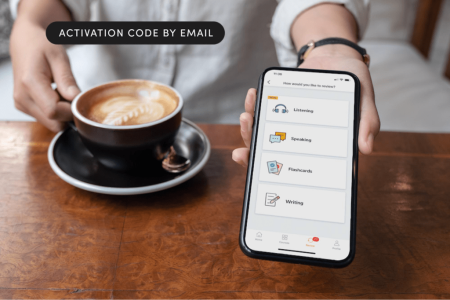Entrepreneur
I’ve been in the hospitality industry for over 20 years, and it’s evolving today more quickly than ever. Like many CEOs, I am approached by vendors who are eager to show me the latest product or service they believe will revolutionize my business. And I get it — they are passionate about their solutions. Their teams pour time, energy and expertise into creating something they believe will change the game for restaurant brands. But here’s the truth that many of my peers and I agree on: not all pitches are created equal.
Over the years, I have chosen partners that align perfectly with my company’s goals, helping us grow and thrive in ways that benefit both parties. As more vendors come onto the scene, my teams have also been on the receiving end of pitches that were a waste of time for both us and the solution provider.
Time is one of our most valuable assets, and the right timing could also be the ultimate difference maker. Here are my tips to set yourself up for success and make your outreach count.
1. Find the right person to pitch
Take the time to find the appropriate person at the organization to contact. It is most likely to get into the right hands if you do, and if they are interested, they can elevate it internally. If you’re marketing an AI solution, do some digging and find a tech leader. If it’s a marketing platform, find the CMO or the primary user of the platform.
CEOs are sometimes treated by a switchboard and asked to redirect vendors to the right person within our organization. It should go without saying that this method is unlikely to be effective. When I receive a real referral from a trusted contact at another organization who has vetted the product and seen value for their brand, I’m much more inclined to listen. Genuine referrals always beat cold outreach, and if your product is compelling, the genuine referral will come naturally.
Related: How to Build Strategic Partnerships That Actually Drive Growth
2. Do your homework on our business
Many pitches we receive show the vendor knows nothing about our company. If you don’t understand our business model, challenges or where we are headed, how can you position your solution as the answer? There are common challenges in our industry, but that doesn’t mean there is a one-size-fits-all product that will address them. Personalize your pitching instead of a generic, scattershot activity that makes prospects feel like a number.
Vendors may be tempted to name-drop their biggest clients, but if you are trying to appeal to mid-sized or smaller companies, that can backfire. A better scenario would be a mutual connection reaching out to me on their behalf who thinks they could be a good fit, and recommending we connect.
Show relevant case studies that demonstrate how your solution has helped companies similar to mine. I want to see proof that you can help me succeed, not that you’ve landed Fortune 100 clients.
3. Get your company’s name out there beyond sales
Find ways to get in front of prospective customers, whether that’s media coverage, trade show presence, or other creative marketing tactics to build general awareness. Trade shows can be a goldmine for showcasing your expertise if you do it right. Attend sessions and use those nuggets to connect with other attendees or speakers. Refrain from aggressively pitching anyone who walks by your booth; instead, engage in a normal conversation to make a connection. That real connection you make can come back as a call to want to learn more.
One great recent example is a kiosk technology vendor that my company started working with last year. Our technology leader noticed the company at trade shows even before we were actively looking for a provider. We knew they worked with smart brands, similar to our size, we trust, not just industry giants. In our initial conversations, the company CEO and salespeople took the time to understand the nuances of our business and were clear about how they serve a range of company sizes. We found them to be a flexible provider that was super innovative and could bring great ideas to our business. They were honest that some of the capabilities we want are still in beta, and we could collaborate and grow together. That kind of transparency and flexibility is what builds trust and sets the stage for long-term partnerships. They continue to provide great support, and we have been learning together to make the kiosk experience for our operators and customers.
4. Be thoughtful with your outreach and avoid spammy tactics
Speaking of solutions providers, there are many ways to send mass emails. It’s not a bad thing to have email lists, but don’t overdo it on frequency, especially for cold outreach. Also, as more people use cell phones rather than office lines, your sales team should still respect their personal space and not text or call repeatedly, especially outside of traditional work hours. If you want to stand out, you have to be strategic and respectful in your outreach.
Think of it as an online dating site, and don’t pester people you are interested in. I have vendors who leave me two or three voicemails a week — all of which go unanswered. If your email or LinkedIn outreach looks like a generic copy-paste message, it will likely be ignored. Instead, focus on making real connections. Comment thoughtfully on posts that resonate with you. If you want to reach out, try a softer approach: “In case you ever need this, I’d be happy to share more.”
Related: A Successful Partnership Hinges on Careful Planning and Execution. Here Are 7 Things You Need to Ensure Partnership Success.
5. Set honest expectations and deliver on your promises
Nothing sours a business relationship faster than being sold by an A-team, only to be handed off to a less engaged support team after the contract is signed. Sometimes, even worse, the entire support function disappears, and we are left to implement and activate it by ourselves. This has happened with an industry-leading sales platform, and we were disappointed from day one and could not go fast enough through our contract terms. That company won’t be getting a happy customer referral from me. Sadly, I have been telling my peers to stay away. So, introduce your prospective client to the account management and client support team before they sign the dotted line.
Set realistic expectations and over-deliver. The result will be longer-term customers, and happy customers can lead to more introductions!
Pitch with purpose, not desperation
When times get tough and leads dry up, it’s tempting to resort to incessant cold calls and desperate outreach. But that approach can easily backfire. The best way to win your ideal customers is to pitch with purpose. In the end, winning the business doesn’t have to be the only goal. If both client and vendor can learn from the pitch process and gain valuable insight on ways to make improvements, that’s a big win.
Find the right person. Do your homework. Make genuine connections at trade shows. Be thoughtful in your outreach. Set honest expectations. And most importantly, build trust by demonstrating that you’re invested in mutual success.
Because at the end of the day, successful partnerships aren’t built on flashy pitches or aggressive tactics — they’re built on trust, value, and a genuine desire to help each other grow.
Read the full article here









